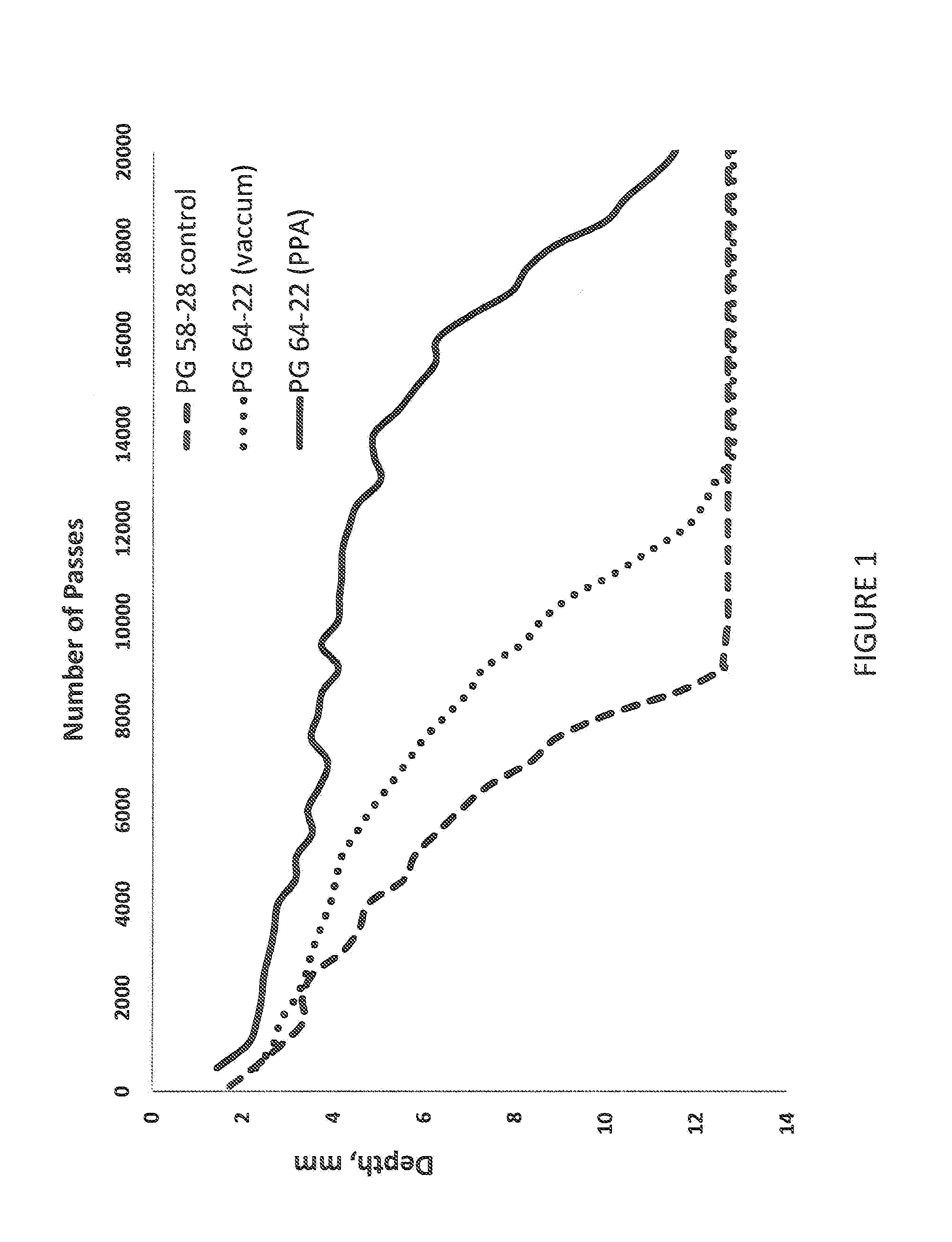Methods and Compositions for Recycled Asphalt Shingles Material
a technology of asphalt shingles and compositions, which is applied in the direction of in situ paving, roads, building components, etc., can solve the problems of increasing stiffness, cracking of finished asphalt materials, and limiting the amount of ras that can be used
- Summary
- Abstract
- Description
- Claims
- Application Information
AI Technical Summary
Benefits of technology
Problems solved by technology
Method used
Image
Examples
example 1
[0044]In order to evaluate the effect of addition of polyphosphoric acid on RAS-containing asphalt mixes, the following samples were prepared: (Sample 1) 5.2 wt % of neat binder PG 58-28 was mixed with 5% consumer waste RAS and trap rock aggregate and used as a control; (Sample 2) vacuum distilled PG 64-22 binder was mixed with 5% RAS and trap rock aggregate and used as a second control; (Sample 3) 0.5 wt % PPA was added to PG 58-28 binder to make PG 64-22 binder and then it was mixed with 5% RAS and trap rock aggregate and used as a test sample. Addition of polyphosphoric acid to PG 58-28 binder was performed at 325° F. with mixing under low shear. Mixing of all samples was performed in the temperature range of 148° C. to 157° C. Both control and test samples were compacted using a Gyratory Compactor at 136° C. to 145° C. following the Superpave Gyratory Compaction (SGC) method. The SGC method produces asphalt mix specimens to densities achieved under actual pavement climate and lo...
example 2
[0052]In this example, the effect of polyphosphoric acid on binder extracted from RAS was evaluated. The experiments illustrate the direct effect of polyphosphoric acid on the recovered binder, which in turn helps explain the benefits obtained when regular RAS material is used. An asphalt blend consisting of neat (unmodified) asphalt (GP 58-28), binder extracted from consumer waste RAS, and polyphosphoric acid was prepared as described herein. Consumer waste RAS was dissolved in toluene in order to extract the binder. After evaporation of the solvent, the extracted binder was mixed with neat asphalt binder using the ratio of 25% extracted binder to 75% virgin binder. 0.5 wt % of polyphosphoric acid was slowly added to the blend and mixed under low shear for 30 minutes at 325° F. Neat binder (without RAS or polyphosphoric acid) and binder modified with extracted RAS binder (no polyphosphoric acid) were used as controls. The binders were graded according to AASHTO M320 specification f...
PUM
| Property | Measurement | Unit |
|---|---|---|
| wt % | aaaaa | aaaaa |
| wt % | aaaaa | aaaaa |
| wt % | aaaaa | aaaaa |
Abstract
Description
Claims
Application Information
 Login to View More
Login to View More - Generate Ideas
- Intellectual Property
- Life Sciences
- Materials
- Tech Scout
- Unparalleled Data Quality
- Higher Quality Content
- 60% Fewer Hallucinations
Browse by: Latest US Patents, China's latest patents, Technical Efficacy Thesaurus, Application Domain, Technology Topic, Popular Technical Reports.
© 2025 PatSnap. All rights reserved.Legal|Privacy policy|Modern Slavery Act Transparency Statement|Sitemap|About US| Contact US: help@patsnap.com

